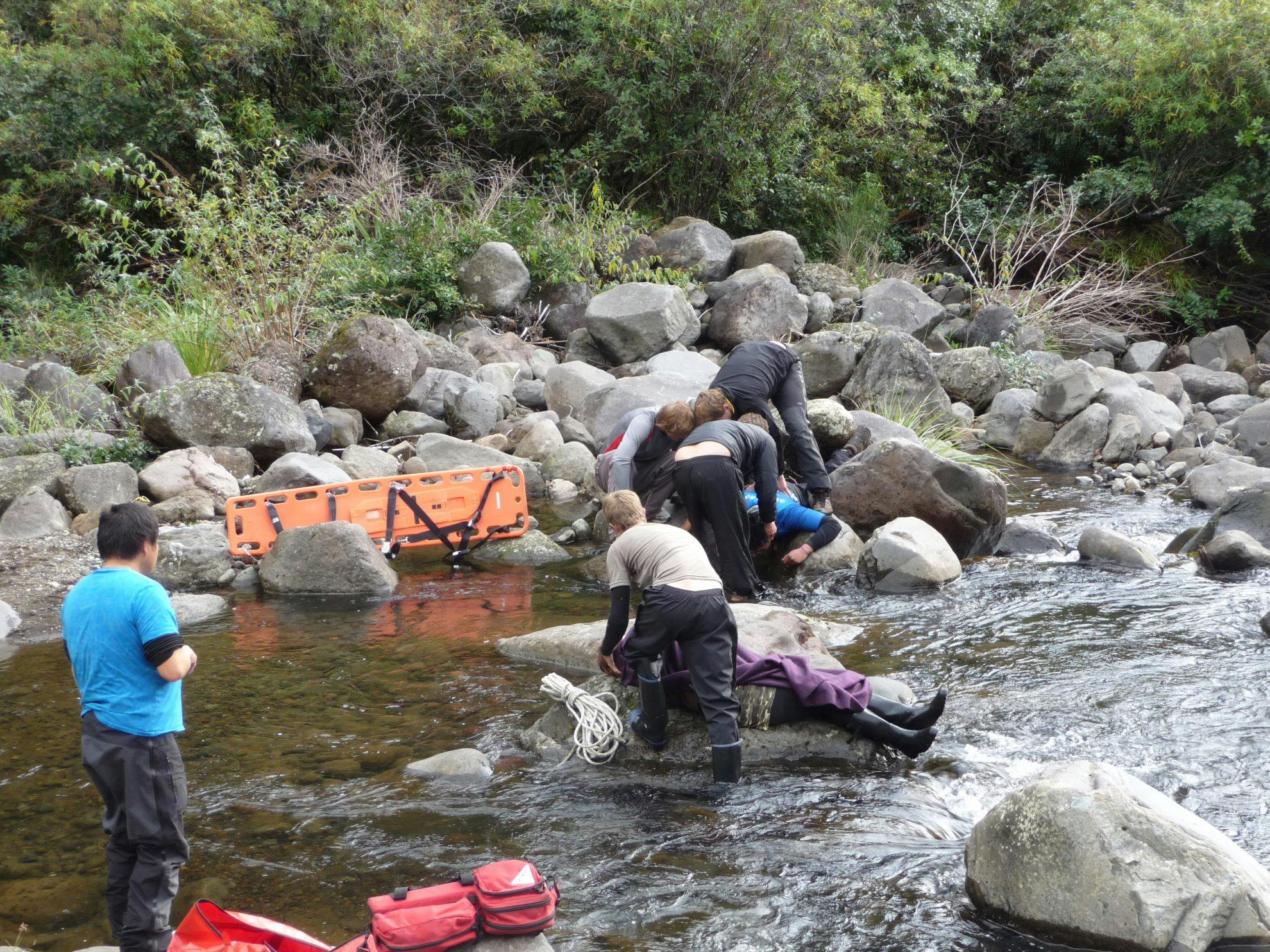In 1985, 215 New Zealanders died of drowning. Since then this figure has declined to average 105 deaths a year over the past five years due to a comprehensive water safety programme run by Water Safety NZ. Despite this decline, New Zealand has one of the highest rates of drowning per capita of any developed country.
Where are people drowning? Rivers account for the largest proportion of drowning locations followed by beaches. Death occurs primarily as water enters the lungs and inhibits their function which is to provide an oxygen supply to the blood stream and in particular to the brain and heart. While initially the brain can be damaged by a hypoxic (low oxygen) state it can still function partially for several minutes. The heart, when exposed to the same treatment, will tend to fail more dynamically leading to cardiac arrest.
In some victims, the airway can spasm as it detects water and can close over preventing water entering the lungs. These people have a greatly increased chance of successful resuscitation due to a decreased amount of trauma to the alveoli.
Should you find yourself in a position to assist a drowning victim the following tips will help you provide a greater chance of survival for them.
- Ensure your own safety. There are numerous cases where the rescuer in a drowning situation has died themselves – sometimes even when the initial victim survives. Make sound, well thought out decisions about how to approach the scene and try to avoid entering the water yourself if at all possible. Send someone for help where practical.
- Get the victim to a place where you can properly assess and treat them. This is difficult in the water so aim for some firm ground. Try to minimise trauma to the spine but not to the point where it will impede CPR. Look, listen and feel for up to 10 seconds to see if the patient is breathing. If they are not they need rescue breaths as soon as possible to introduce oxygen into their bloodstream via the lungs. If you have had to enter the water you may need to administer these breaths at a rate of around one breath every 5-6 seconds as you try to get them to the shore. If you are on land or a boat and can see water in the patient’s mouth roll them into the recovery position to let gravity drain the water away.
- Chest compressions are generally ineffective in the water so it is recommended rescuers concentrate on the breaths until the patient can be positioned on their back on a hard surface. If breathing is still absent after the initial breaths, perform 30 chest compressions at a rate of around 100/minute. Follow this by two breaths then 30 compressions: two breaths CPR. If the patient vomits, immediately roll them onto their side to drain this from their airway.
- Continue CPR until either help arrives, the patient recovers or until the rescuers are too tired. If the patient’s heart has stopped, the chances of reviving them with CPR alone are lessened so getting a defibrillator to site as soon as possible becomes a priority. Performing chest compressions is tiring work so you will need to swap that role among the group.
- It is possible for a person to inhale water and be rescusitated but have their heart stop from associated complications later. Medical professionals debate whether this is due to a dilution/thickening effect on the blood or a resulting chemical change. Anyone who has been immersed in water while unconscious should be suspected of this and hospitalised.
– Henry Worsp







